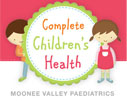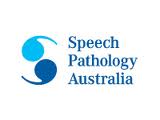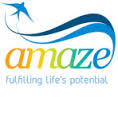Receptive Language
Understanding of language involves gaining information and meaning from routine (e.g. we have finished our breakfast so next it is getting dressed time etc), visual information within the environment (e.g. mum holding her keys means that we are going to get the car, a green light means go, etc), sounds and words (e.g. a siren means a fire engine is coming down the street, the word ball means a round bouncy thing we play with, etc), concepts such as size, shape, colours, time etc., grammar (e.g. plurals cat/s, past tense fetch/ed etc) and written information (e.g. signs in the environment like “no climbing”, written stories, etc).
Some children who have difficulty understanding oral language (words and talking) may appear to be understanding because they may be able to pick up key words and get visual information from the environment or from gestures.
What are the approximate ages that Understanding Language develops:
0-12 months
Children understand non-verbal information such as facial expressions and tone of voice, as well as gestures that carry meaning, such as pointing etc. Words are beginning to have meaning but they are limited to familiar or routine contexts, e.g. the child understands the word “bath” but only in the context of bath time when they are in the room with the bath etc.
12-18 months
A better understanding of spoken words and language is emerging. Children can understand approximately 50 words and are begining to recognise everyday naming words, such as “car” or “ball”, even when they are not in their familiar surroundings. They are understand 1 keyword in a sentence, e.g. “where’s your nose?”
2 years
Children can understand many single words and a few two word combinations, e.g. “dolly’s eyes”, “give the brick to teddy”. They are beginning to understand action words that they can carry out, e.g. “sit”, “run”, “jump”, “eat”, “drink”, “sleep”, “wash”, “brush”. Vocabulary is approximately 250-300 words. They can point to main body parts, clothing items, toys and food when asked.
3 years
Children understand 3 keywords in a sentence, e.g. “wash teddy’s tummy”, “give the big ball to dolly”. They are beginning to understand describing words, e.g. “big”, “little”, “hot”, “cold”, “wet”, “dry”, “clean”, “dirty” and can identify objects by their use (e.g. “which one do we eat? Drive?, Sit on? etc). They also begin to understand position words, e.g. “in”, “on”, “under”. Between 3-4.5 years they are developing understanding of pronouns that stand instead of naming words (e.g. my/me, he, she, we, you, their, our, herself etc). Children understand many more words that they are actually able to use expressively.
4 years
Children understand 4 keywords in an instruction, e.g. “put the pencil under the big box”. They generally understand colours and shape words, e.g. “red”, “square” and are beginning to understand more abstract describing words, e.g.”same” and “different”. They can understand simple “What?”, “Who?”, “Where?” questioning and their concept knowledge is developing. They can sort objects into simple categories (e.g. all the animals together and the food together), sequence a simple 3 picture story and will be attempting simple counting. They are beginning to make predictions about what might happen in a story and understand the consequences of other people’s actions.
(N.B. Understanding of language develops before expressive language. The difference between what a child understands and what he can say is about 5:1 between the ages of 2-3 ½ years, i.e. the child knows far more than they can say).
5 years
Understanding is developing quite quickly and children understand longer, more complex sentences containing 8 words and should be able to understand most things said to them at school or home. They understand more difficult “How?” and “Why?” questioning. They can understand simple time concepts such as yesterday, tomorrow, morning, afternoon, later, etc. Children are able to retell a story from memory using up to 5 sentences and can hold a message in their head long enough to deliver it to another person. Children use language which represents imaginary situations, for example, words like “pretend” and “I hope”. Concept knowledge is increasing and a child will understand colours, shapes, directions and spatial concepts e.g. far, near, behind, in front etc.
6 years
The child’s understanding of vocabulary is developing rapidly and they have a wide vocabulary knowledge. Classification of objects has increased and children begin classifying in terms of a variety of things e.g. form, colour, use or composition (what it is made of). Understanding of the days of the week, months and seasons is starting to develop and they are able to understand simple money concepts. They are beginning to understand stories which contain a series of events and understand consequences to actions. They also understand the difference between reality and fantasy.
7 years
Vocabulary knowledge continues to expand and they understand complex directions with little repetition. They also understand opposite analogies with little difficulty (e.g. girl vs boy, flying vs. swimming, sweet vs. sour, etc). They can read and understand simple paragraphs and stories and are able to process and store new information readily.
8 years
By this age, the child has developed an extensive vocabulary, has well developed concept knowledge and has well developed understanding of time and time concepts. They are also able to read well and understand more complex story lines.
Why is it important?
Understanding of words and language (Receptive Language) is very important in order to communicate successfully. Children who have understanding difficulties may find it difficult to follow instructions at home or within the educational setting and may not respond appropriately to questions and requests. Within the school setting, difficulties in understanding may lead to attention and listening difficulties and/or behavioural issues. As most activities require good understanding of language, it may also make it difficult for the child to access the curriculum or engage in the activities and academic tasks required for his or her year level of school.
Building blocks necessary to develop understanding of words and language (Receptive Language Skills):
- Adequate hearing to be able to hear all the sounds and information contained in speech and language.
- Attention and Listening – being able to attend to speech and sounds long enough to be able to listen and process the information.
- Good interaction skills (e.g. eye contact, joint attention, turn taking. Etc.) with main carer/parent.
- Play development.
You can tell there are problems with understanding of words and language (Receptive Language) if the child:
- Has difficulty attending and listening to language.
- Is not paying attention within group times at kindergarten and school
- Is not following instructions that others the same age would be able to follow
- Is responding by repeating what you say instead of giving an answer.
- Finds it difficult to listen to stories.
- Gives unusual answers to questions.
(These difficulties may vary depending on the child’s age)
When understanding of words and language (Receptive Language Skills) are less than ideal, it can contribute to:
- Difficulties with attention and listening skills.
- Perceived behaviour difficulties because they do not follow instructions due to not understanding.
- Become disruptive within the class room because they are unable to “access” or understand what the teacher is saying or talking about.
- Reading and writing difficulties.
- Difficulties relating to peers who are the same age.
Contact The Team
If we can help in any way, please leave your details and we’ll get back to you at our earliest convenience.
What can be done to improve understanding of words and language (Receptive Language skills)?
- For the young child engaging in play with your child on a regular basis, model how to play with toys, follow your child’s lead and talk about what they are doing with the toys.
- Talking to your child often throughout the day, talk about things you are doing so the child learns to link the words with the actions.
- Turning of back ground noise in the home (e.g. T.V, radio, music) etc.
- Getting face to face with your child when talking.
- Simplifying the language you use with child so it is at the level they understand (i.e. which is usually just above their expressive language level or how much they are saying).
- For some children using visuals such as signs or pictures to help provide more information can help the child with understanding.
- Looking at books together with your child using books they are interested in.

Activities that can improve understanding words and language (Receptive Language Skills) include:
- Naming items together when looking at a book, in the car, looking outside, while they are playing, during shopping etc.
- Engaging in lots of “hands on” activities (e.g. shopping, going to the park, zoo, museum, etc.) then talking about what you did and saw, drawing what you did and saw, acting out what you saw and did.
- Playing something together that your child really enjoys and throughout the game model new words and phrases.
- Think of different ways to explain new concepts (e.g. looking at the concept of “wet”: use water to wet things and talk about things that are wet and dry; look at pictures of things that are “wet”; if it rains, or your child is in the bath, talk about the concept of being “wet”; make up sentences and stories about being wet/dry etc.).





